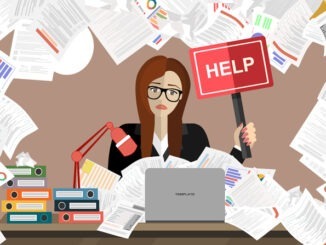Does your office environment foster productivity and motivate employees to perform at their best? We delve into some simple strategies to supercharge your team’s efficiency in the workplace.
CREDIT: This is an edited version of an article that originally appeared on Business News Daily
In the dynamic world of business, productivity is the linchpin of success. To elevate your team’s performance, it’s not only about the physical workspace but also the intangible aspects that shape your work environment. Let’s explore key drivers of productivity.
Cultivate a thriving company culture
While the physical layout of your office is important, it’s equally crucial to foster a culture of productivity. This involves generating enthusiasm about your company’s mission and ensuring that your employees understand their vital role in achieving your business objectives.
Raven Beria, the founder of the brand consultancy firm Brandalaxy, emphasises the importance of a strong company culture. In her view, it all starts with this culture. “It doesn’t matter what kind of technology or office layout you have if you haven’t defined the values or clarified the vision of your business.” Simon Hansen of Best Sports Lounge echoes this sentiment, emphasising the importance of recognising and rewarding effort.
Sometimes, office design does come into play. Kayla Pendleton, the owner and founder of Her Space, recognises this and incorporates it into her co-working spaces. She acknowledges the importance of creating shared spaces that harness the flexibility of workspaces to encourage community while also supporting individual productivity. She says that if you opt for an open office or shared spaces, you must also provide meeting spaces where people can work privately or make phone calls.
Encourage movement
Sustaining focus throughout the day often requires taking short, rejuvenating breaks. Jamie Fertsch, the director and co-founder of Xdesk, recommends this strategy. Her company specialises in creating customised, ergonomic desks from environmentally friendly materials, including stand-to-sit desks that promote changing positions throughout the workday.
Fertsch stresses the importance of recalibrating and re-energising by taking these brief breaks. You can incorporate movement into your workspace by strategically placing equipment or creating areas like a water cooler that encourage employees to stand and stretch.
Additionally, providing opportunities for employees to work remotely or adopt flexible schedules can contribute to movement and improved productivity.
Organise your gadgets
Electronic devices like smartphones and tablets can be both organisational tools and distractions. To avoid wasted time and maintain focus, Jamie Fertsch recommends designating a specific place for these gadgets. By keeping them in a dedicated spot while working, you can minimise distractions and notifications.
Storing your electronics in a drawer is an effective way to keep them out of sight and out of mind.
Bring nature into the office
Believe it or not, plants can play a pivotal role in an office’s productivity. Beyond their aesthetic appeal, they have tangible benefits.
According to Ron Radu, the co-founder of Léon & George, the presence of numerous plants in the workspace leads to cleaner air and encourages employees to be more energetic and creative. Scientific studies confirm that greenery in the office can reduce stress and enhance productivity and creativity.
Personalise your workspace
While maintaining cleanliness and organisation is essential, personalisation can help you feel more connected to your work. Adding personal touches in moderation is key. Jamie Fertsch suggests incorporating items that inspire you to be productive. Whether it’s a framed photo, a desktop calendar, or other personal items, they can provide motivation while maintaining a tidy workspace.
Maintain a clean workspace
A cluttered workspace can be a major hindrance to productivity. Jamie Fertsch advises spending a few minutes each day tidying up your workspace. This includes decluttering, organising your workspace according to your preferred system, and eliminating unnecessary items to prevent distractions.
In addition to daily cleaning and organisation, Fertsch recommends preparing a to-do list for the following day at the end of your workday. This practice allows you to reflect on your daily achievements and better prepare for the day ahead.
In conclusion, there’s no one-size-fits-all approach to office design, functionality, or productivity. Encourage flexibility, incorporate greenery, and add personal touches to your workspace. This inclusivity fosters motivation, creativity, and a shared commitment to productivity, ultimately leading to collective success.



Be the first to comment